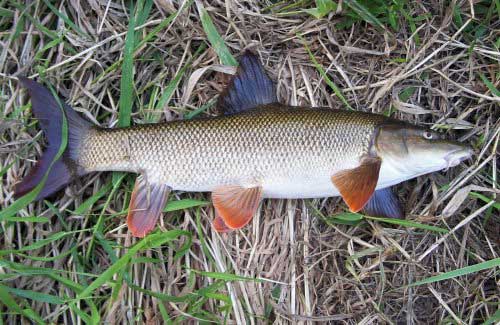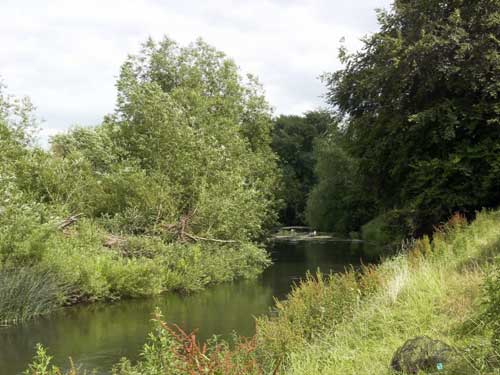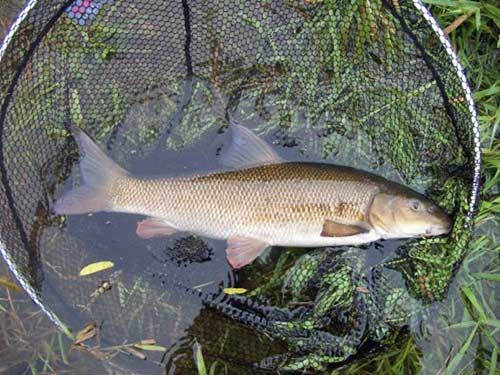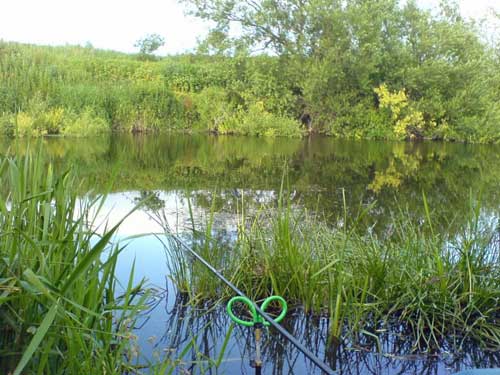Early Season Barbel
16th June and I’m a bit like a 12 year old at Christmas – old enough to be cynical, but still excited by the idea of it! The end of the close season on stillwaters was a bit like killing Father Christmas for me in that the excitement still builds in the weeks before the big day, but the magic has been dulled by being able to fish stillwaters without a break. This year I didn’t think I’d be able to fish the opening day and, to be honest, I wasn’t that bothered, but then a gap opened in my diary on Monday afternoon, the excitement got the better of me and I began to make plans. You need to think carefully about your fishing on opening day. The banks are going to be crowded (or at least busier than usual), the whereabouts of fish will be uncertain and the hot pegs will have been occupied since daybreak or from midnight if allowed. So I thought carefully and devised a cunning plan. I was going to fish the Swale, because I’d been away for months and I missed her. I was going to target barbel, but if conditions weren’t right, or I couldn’t find a decent swim, I’d fish for perch. The Swale holds some beautiful perch, but later in the season they do tend to share swims with barbel and this can cause problems if you hook a big one on perch gear. You can use heavier tackle, but you risk pulling out of fish and I still lose sleep over a perch I pulled out of several years ago – I wouldn’t like to guess the weight, but it was big…. very big. At least during the first few weeks of the season there’s a chance of the barbel not being present in some perch holes. Monday is hectic. Rise early, a quick dash up the M1 from Chesterfield on my motorbike, throw the gear and a change of clothes into the car and head off for a meeting. Meeting over, I head up the A1 to Boroughbridge, buy some food for later, bolt down some fish and chips and set off on a tour of the Swale parking spots. As expected, Asenby, Cundall and Thornton Bridge look busy so I head for a spot that’s normally a bit quieter. This stretch also has the advantage of having extensive shallow areas, something I consider to be essential for early season barbel. There are a few anglers scattered along the riverbank, but one of the swims I had in mind is empty although the trampled grass gives evidence of previous occupation. A bit of gentle probing along the bank reveals that one of the other anglers had tried the swim, but given up “because it’s too shallow.” Hmm…. I go for a walk and consider my options. There are half a dozen anglers spread out along the length and most of what I’d consider to be good early season swims are occupied. Surprisingly, nobody has caught. I decide to give the empty swim a go and head back to the car for my gear. On the way back I bump into someone I know and once I’m settled into my swim he sneaks over the flood bank for a chat, which gives me the opportunity to apologise for a bit of gentle teasing in a previous article! It looks like it’s going to be a hard day, but we’re both convinced that I’ve got a good chance of a fish in this swim.
The swim is at the end of a long shallow section, with a slightly deeper run along some willows on the far bank. Below this it shallows off again before dropping into a deeper glide. The far bank willows give some much needed cover and security for barbel and chub and turn an otherwise OK swim into banker for a fish or two at this time of year. Mindful of the fact that someone has fished here already I’m sparing with the feed and catapult two small pouches of 4mm pellets across to the willows. I’m fishing with a small open-ended feeder filled with soaked 4mm pellets and an 8mm pellet banded on to a hair on a size 12 hook. My hooklength consists of a short length of 12lb Drennan Microbraid and a longer length of the 12lb Snyde main line up to the feeder. I start with a total length of about 2ft, but I’m prepared to extend this if I feel that I’m not getting the bites I should. I drop the feeder over against the willows and drop the rod into the rests with the tip kept low so a good length of my line is on the bottom and settle back to wait. I’m prepared to give it an hour before recasting, but after about 20 minutes the rod tip jags, pulls round and I’m into my first fish of the season, a chub of about 2lb. Twenty minutes later I hook another slightly bigger chub and then all is quiet for an hour. I decide to risk feeding some more and I put another small pouch of pellets over against the willows. This has the desired effect as, after a short wait, the rod tip pulls round and I’m into my first barbel of the season. It’s a lovely slim four pounder and I admire it for a moment in the net before I slip it back. Unfortunately the commotion has attracted attention and one of the other anglers wanders down for a chat. As I suspected it might, the conversation is conducted from the top of the flood bank and I have to bite my lip and force myself to be civil as my mind’s eye sees fish scattering from the swim.
Not surprisingly I have a long wait before my next fish, another barbel of just under 6lb. I risk feeding a few more pellets and get an immediate response from a good chub of about 41/2 lb, before what seem like a procession of people (three actually) troop along the top of the bank. They ask me how I’ve done and inform me, rather redundantly I think, that they haven’t seen any barbel! As I suspected this turns out to be the final straw and the swim dies on me. I give it another hour before packing up and heading home. It’s not been a memorable opening day, but I’ve got a quiet glow of satisfaction as I head for home. Lessons Learnt
|
Welcome!Log into your account

















